1946 Wheat Penny Coin Value: How Much Is It Worth?
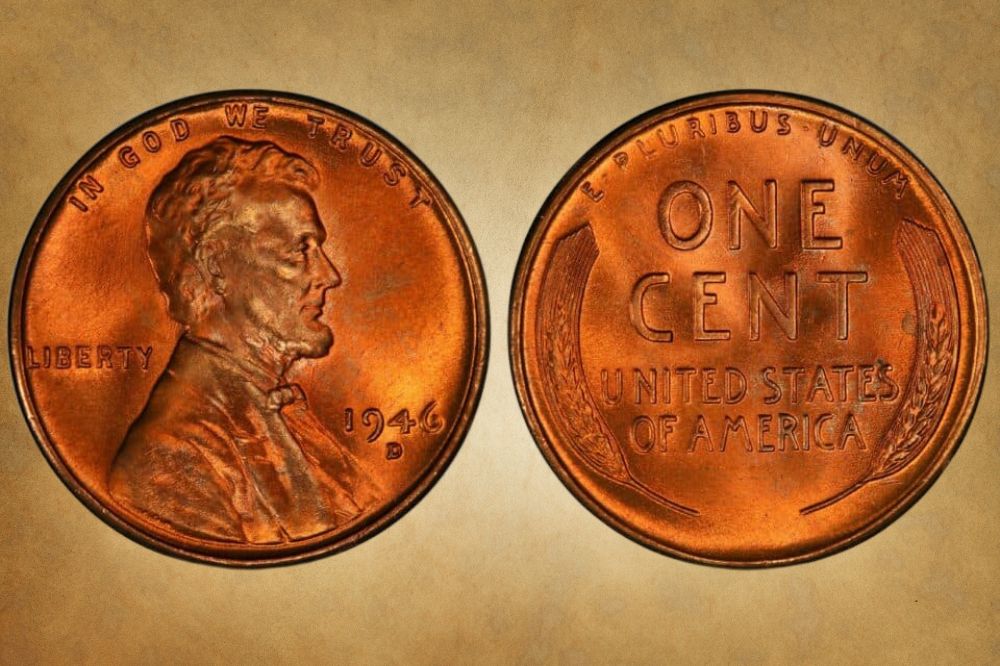
The wheat penny gets its name from the design on the reverse, two ears of wheat. It was the original form of the Lincoln penny, one of the longest running coins in the world. We’re going to look at just one of its mintages: 1946.
Read on to learn more about the 1946 wheat penny value, its history, and some of the interesting – and valuable – error coins out there.
Ready? Let’s get started!
1946 Wheat Penny Value Chart |
|||
| Mint mark | MS63 | MS65 | MS67 |
| 1946 No Mint Mark Wheat Penny Value | $6 | $26 | $775 |
| 1946 D Wheat Penny Value | $10 | $24 | $225 |
| 1946 S Wheat Penny Value | $10 | $18 | $240 |
*Values shown are for coins graded red (RD).
1946 Wheat Penny Value Guides
1946 (P) No Mint Mark Wheat Penny Value
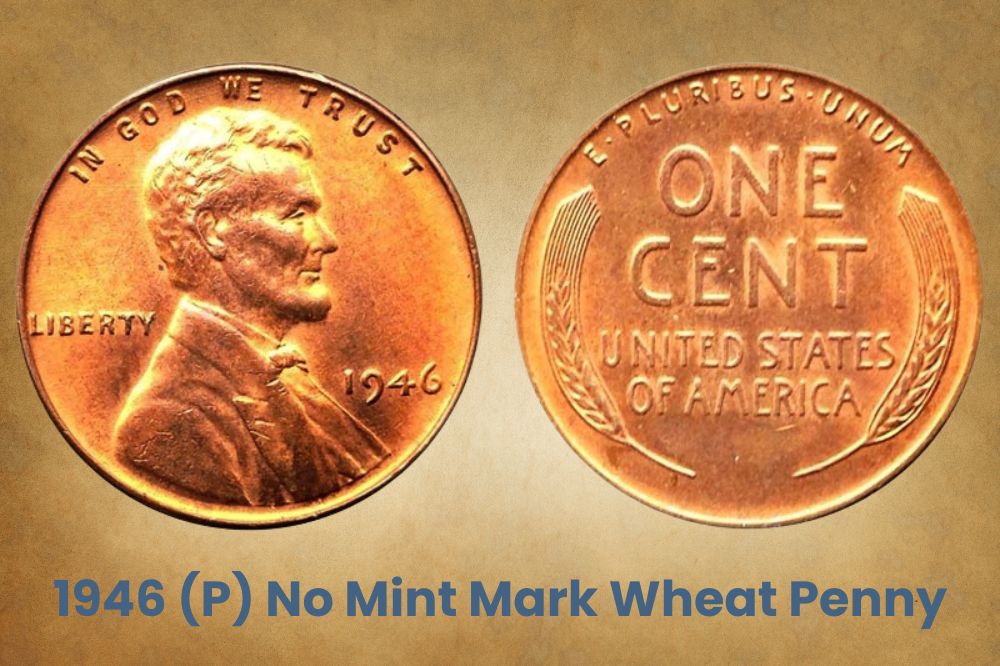
1946 pennies were struck in larger numbers at Philadelphia than at any other mint facility. That makes them very easy to find in circulated grades. And even though they’re almost 80 years old, they’re not worth much more than their face value.
You can tell if your 1946 wheat penny is from Philadelphia by looking for a mint mark. That’s a letter that appears beneath the date on the obverse. If there’s no letter, that means your penny was struck in Philly.
Uncirculated 1946 wheat pennies are the ones that are worth more. The value can vary hugely, depending on color and condition.
The least valuable are generally brown coins. But all colors are rare at MS65 and above. And the finest examples of brown wheat pennies can still be worth good money. A 1946 wheat penny graded MS67 BN by the PCGS sold on eBay in 2021 for $736.
A 1946 wheat penny graded red is valued at around $26 at MS65. And prices accelerate sharply after that. The auction record for a 1946 (P) wheat penny was set by a coin graded MS67 RD in January 2006. At the time, only six examples had been graded at this level by the PCGS, with none finer. And it sold for almost $15,000.
Since then, however, more examples of highly graded coins have come to light, and values have declined. Today, the PCGS population of 1946 MS67 RD wheat pennies is 41. And the PCGS value for a coin at this grade is $775.
1946 D Wheat Penny Value
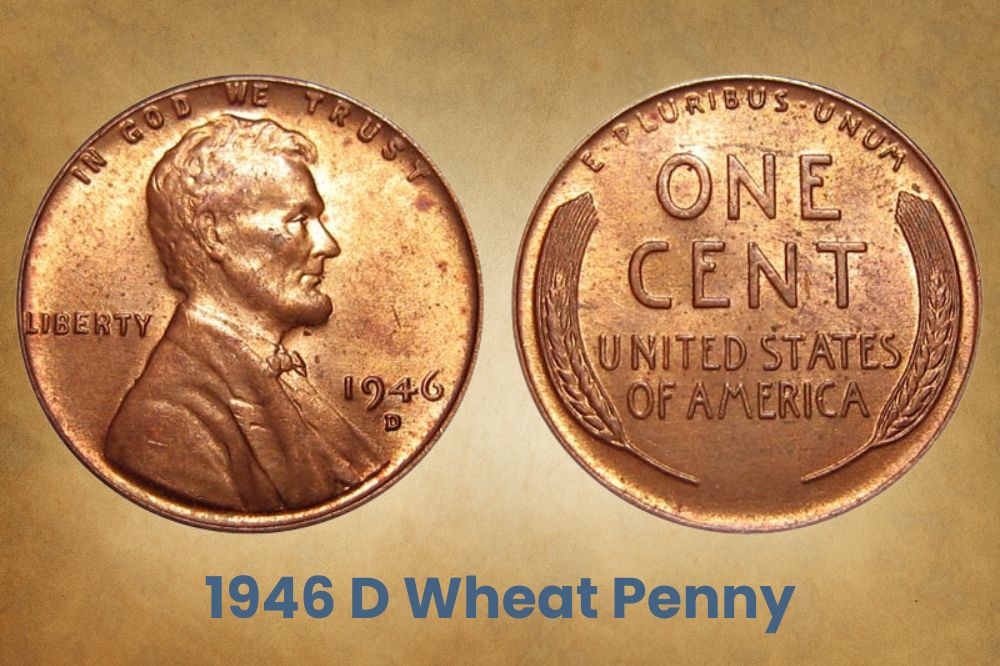
Fewer pennies were minted at Denver than Philadelphia. But the numbers were still large – over 315 million. So circulated coins will usually be worth only their face value.
In lower mint state grades, a 1946 D wheat penny will be worth anything from a couple of dollars to about $20. Even at MS65, the lowest “gem quality” grade, the PCGS pegs its value at only $24.
Values increase at MS66+. A red coin at that grade is valued at $75, while at MS67 it’s $225, and at MS67+, $1,150.
The auction record for a 1946 D wheat penny was set in 2014 for a coin graded MS67 RD. It sold for $2,585, including the buyer’s premium. At the time, only one coin had been graded higher, at MS67+. The PCGS population has since risen to 22, keeping a lid on values.
Brown and red brown coins are put forward for grading less often. That’s because it’s less likely that the value will warrant the grading fee.
The auction record for a 1946 red-brown Denver wheat penny was set in 2021 on eBay. The coin was graded MS67 RB, the only example graded at that level by the PCGS, with none finer. Even so, it sold for a relatively modest $145.
1946 S Wheat Penny Value
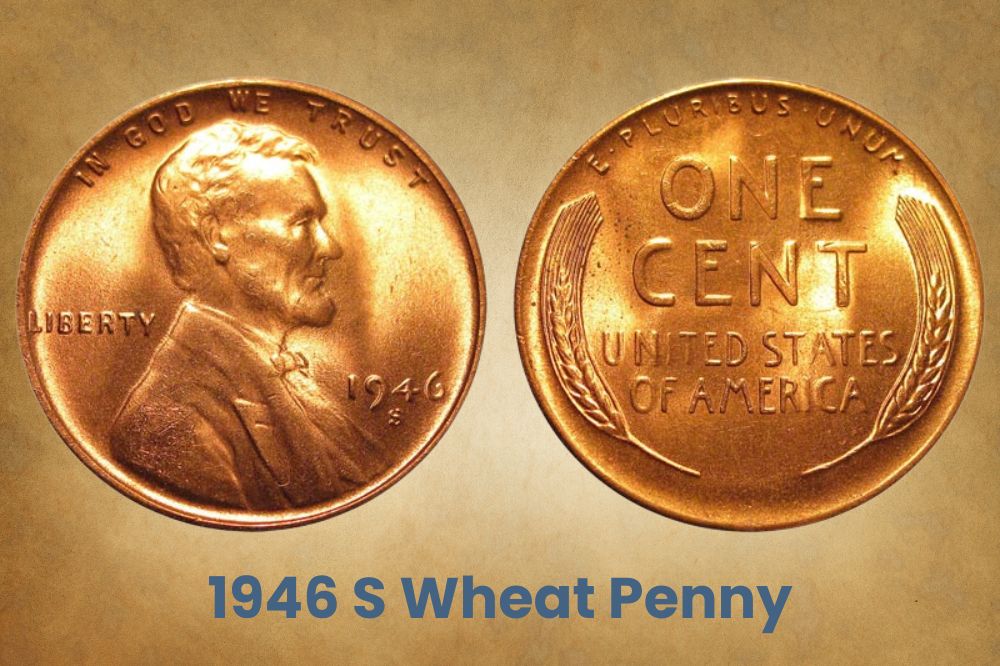
San Francisco is the rarest mint mark among 1946 wheat pennies. But with almost 200 million struck, they’re not scarce in circulated grades.
Uncirculated coins are worth more than their face value. Prices at most grades, however, will still be in reach of many collectors.
A red 1946 S wheat penny is worth around $10 at MS63. That value rises to $18 at MS65, and $240 at MS67. So you can acquire a very attractive coin without spending silly money.
The highest price ever paid at auction for a regular strike 1946 S wheat penny was $6,169. That was for a coin graded MS67+ RD and sold in 2016. It was particularly interesting to collectors because it was a variety known as a “Trumpet Tail S”.
Related Posts: 16 Most Valuable Wheat Penny Errors
1946 Wheat Penny Errors and Varieties
Re-punched Mint Mark
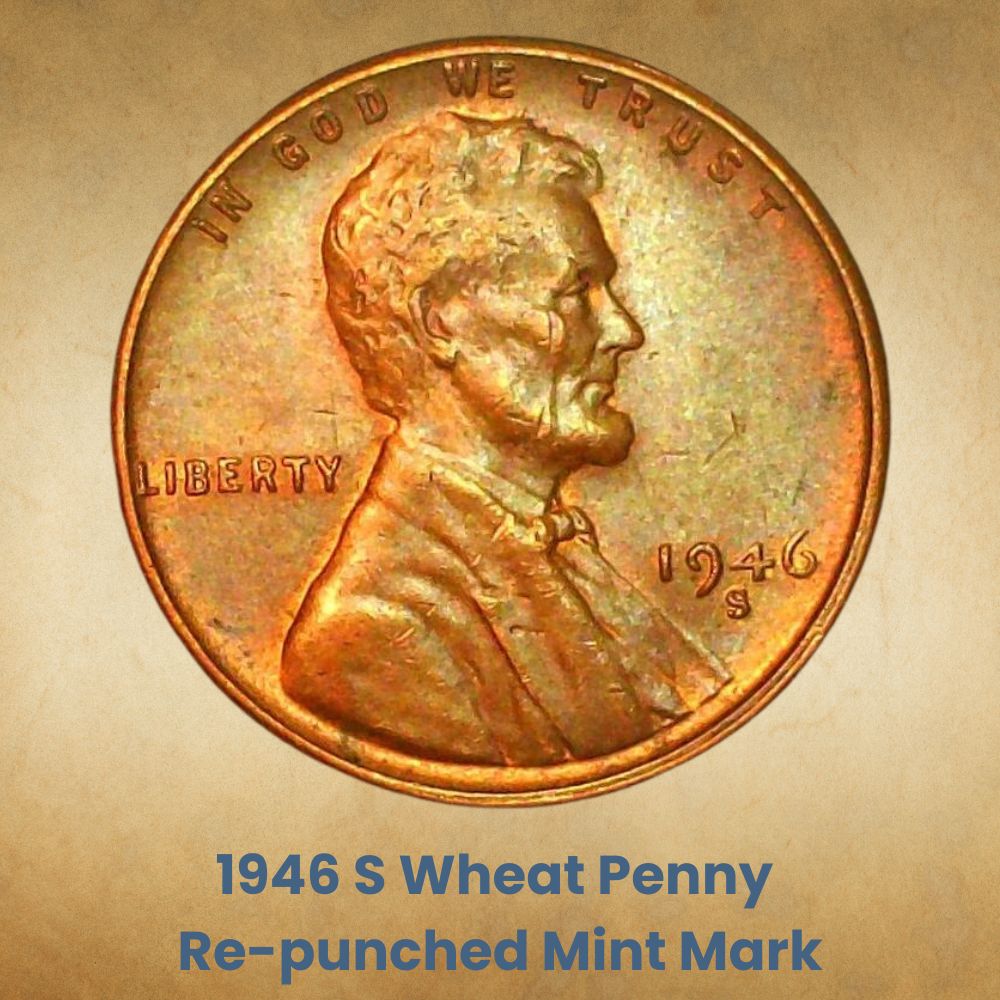
Some of the 1946 wheat pennies struck in Denver had the mint marks re-punched. You can see the faint outline of the original “D” mint mark just above the new one.
An example graded MS64 RD by ANACS sold for $60, while one graded MS67 by the NGC sold for $280.
Off-center Strike
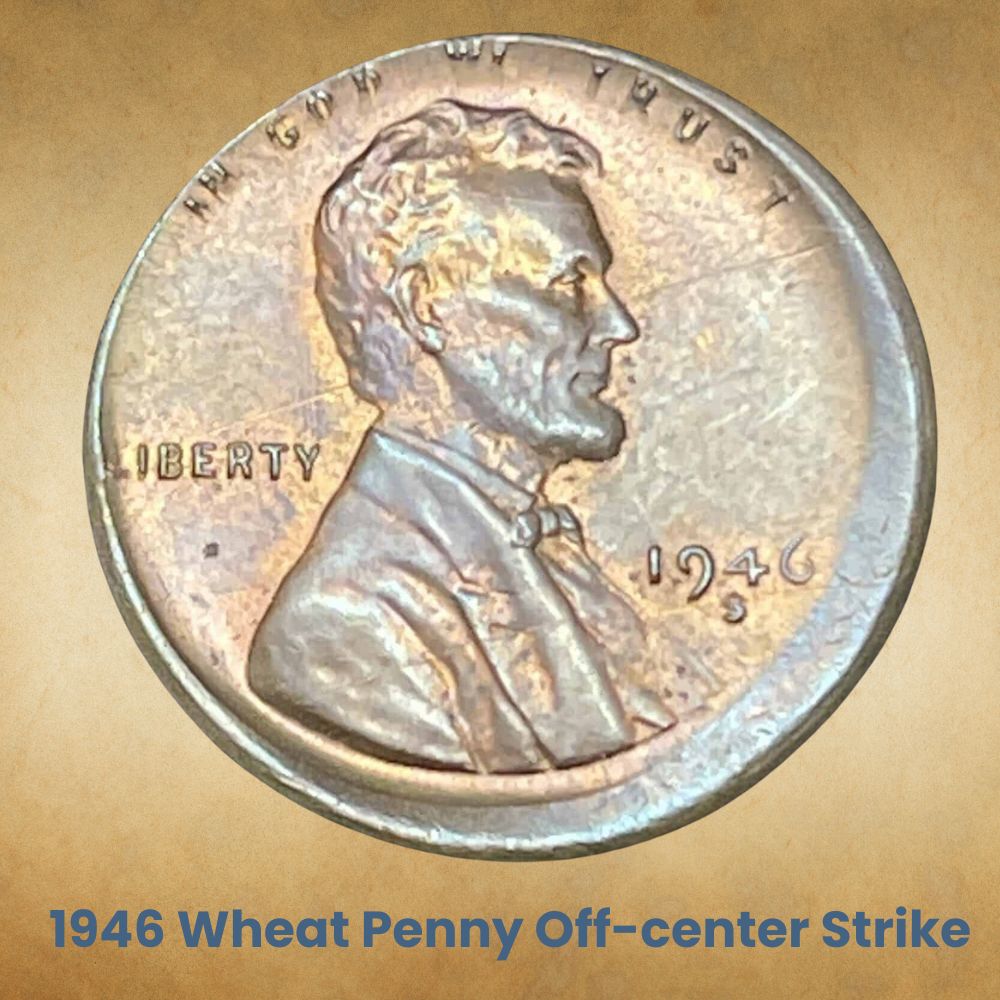
Occasionally, coins are struck off-center at the Mint. A 1946 wheat penny struck off-center in Philadelphia and graded AU58 by ANACS sold for $50.
Mint state examples in higher grades can fetch more. Another 1946 wheat penny from Philadelphia, struck 10 per cent off-center and graded MS64 by the PCGS, sold for $150.
Overmintmark – S over D
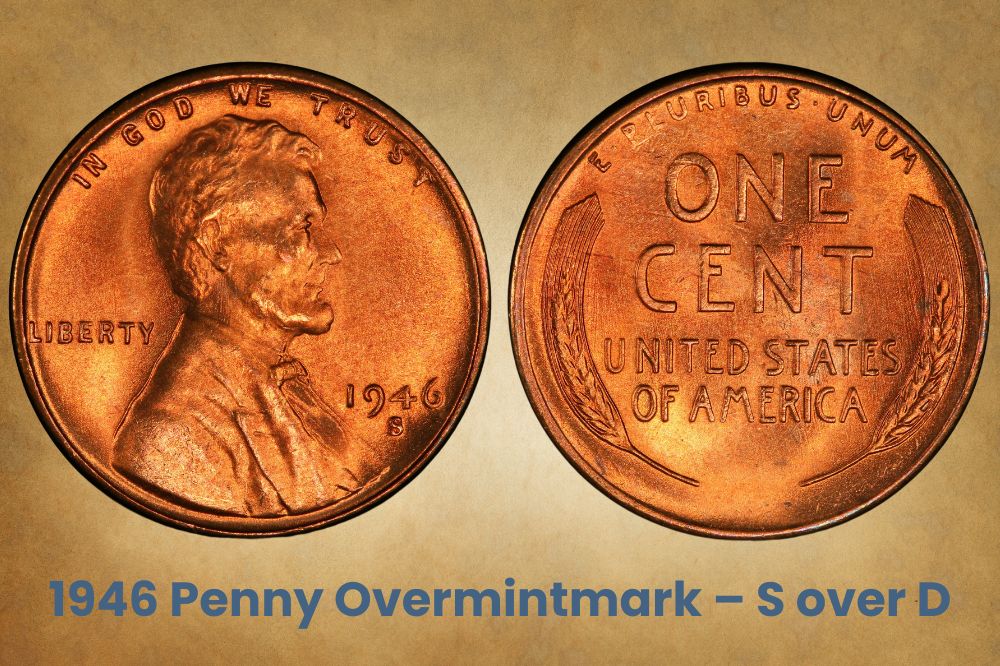
In some cases, the mint mark on the coin was changed. A number of 1946 pennies have an S punched over the D. Even circulated examples of this coin can be quite valuable.
An example of this error graded by the PCGS as XF45 (extremely fine) sold at auction for $125. But as ever, finer quality examples can be worth much more. A coin with the same error, graded by the PCGS at MS66+ RD, sold for over $3,000.
Wheat Penny Struck on Dime Planchet
Very rarely, coins are struck on the wrong type of planchet. This happened to one 1946 wheat penny struck in Denver. Instead of the copper and zinc 1-cent planchet that should have been used, it was struck on a dime planchet instead.
The resulting coin was graded at AU50 and was damaged into the bargain. But the rarity of the error meant that it still sold for over $400.
This YouTube video from Couch Collectibles shows you all these error coins, as well as fine examples of other valuable 1946 wheat pennies.
Related Posts: 19 Most Valuable Lincoln Memorial Penny Worth Money
History of the 1946 Wheat Penny
The penny struck in 1946 was one of those known as the “wheat penny”. It got its name from the reverse (the “tails” side) of the coin, which showed an image of two ears of wheat. It was the same design that had been used since Lincoln pennies were first minted back in 1909.
The Lincoln penny was the first to bear an image of a real person. Previous coins had depicted Lady Liberty in various forms on the obverse. The bicentenary of Lincoln’s birth in 1909 led to calls for this to change, and for the former president to be honored on the nation’s coinage.
The 1946 penny was the last of the wartime issues of the coin. The metal composition of the wheat penny had been changed in 1943, from copper to steel coated in zinc. The change released enough copper to make 1.25 million shells for the war effort.
But the steel pennies were short-lived, and in 1944 the coins returned to their previous copper appearance. All 1946 pennies were made of 95 per cent copper and 5 per cent zinc.
This was a slight change to the pre-war composition. Wheat pennies prior to 1943 had also been made of 95 per cent copper, but the remaining 5 per cent was a mixture of tin and zinc.
Over 1.5 billion wheat pennies were struck in 1946. Most of those – almost a billion – were struck at the mint facility in Philadelphia. Over 300 million were struck in Denver. And just under 200 million were struck in San Francisco.
The wheat penny continued to be made until 1959. That year marked 150 years since Lincoln’s birth, and a new design was commissioned to celebrate the occasion. The ears of wheat were replaced with an image of the Lincoln Memorial in Washington DC.
Related Posts: 19 Most Valuable Wheat Penny Worth Money
how to identify 1946 Wheat Penny?
The Obverse of the 1946 Wheat Penny
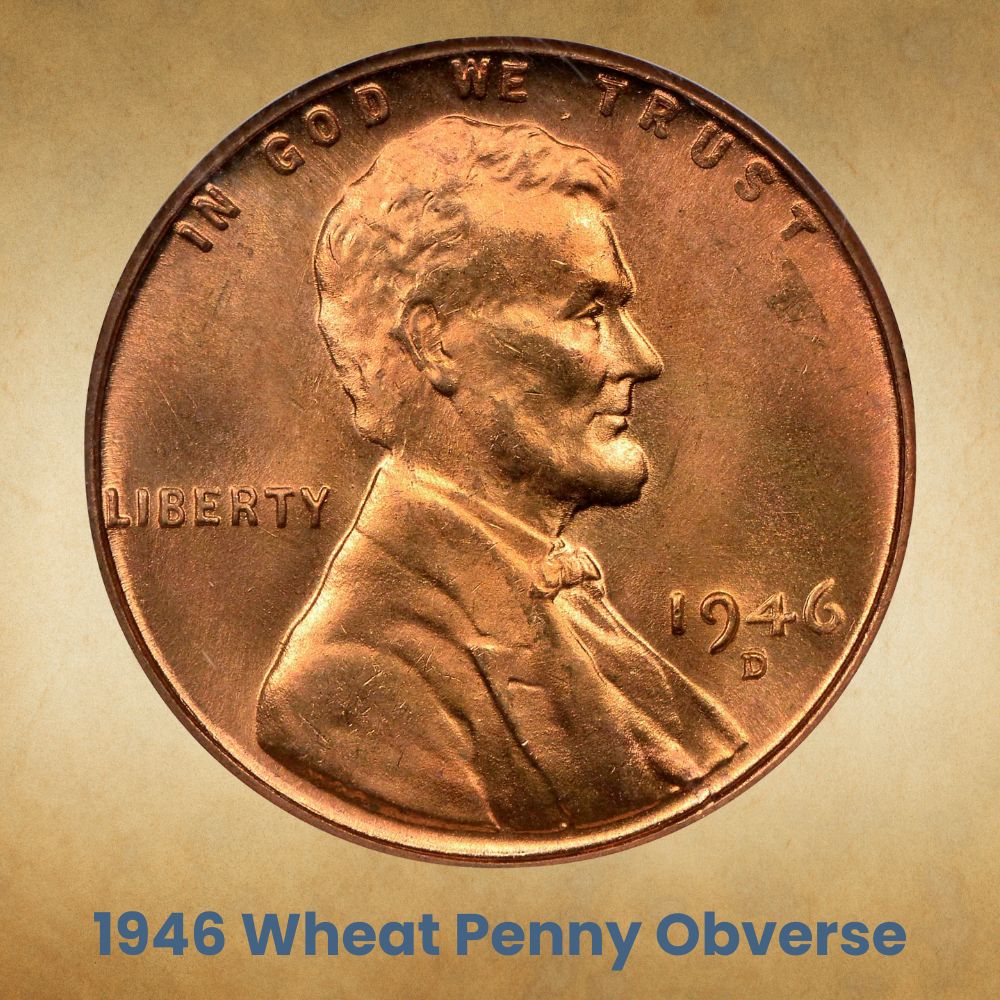
The obverse of every penny bears the same image that has adorned all Lincoln cents from 1909 to the present day. It is a head and shoulders portrait of Abraham Lincoln shown in profile and facing right.
Lincoln’s image was the work of a man called Victor David Brenner. Brenner is in turn thought to have based it on a photograph of the former president taken by one of the assistants of photographer Matthew Brady.
Brenner said he had imagined Lincoln as he would have looked when reading to children, believing that this would show the president at his most engaging.
Brenner had originally intended to sign the portrait, but this raised eyebrows at the mint. He offered instead to replace his signature with his initials, which would appear on the reverse.
Even that, though, was to cause controversy. Production of the 1909 penny was halted because of criticism over the size of Brenner’s initials, and fears that they constituted “advertising”. Despite the artist’s protests, they were removed.
But they were reinstated in 1918, this time on the obverse. Look closely at an 1946 wheat penny, and you can see them discreetly tucked away along the lower edge of Lincoln’s shoulder.
Also on the obverse are the motto “In God We Trust”, which appears above Lincoln, and the word “Liberty” to the left of his portrait. To the right is the date. And if the coin was minted in Denver or San Francisco, a “D” or an “S” will appear beneath it.
The Reverse of the 1946 Wheat Penny
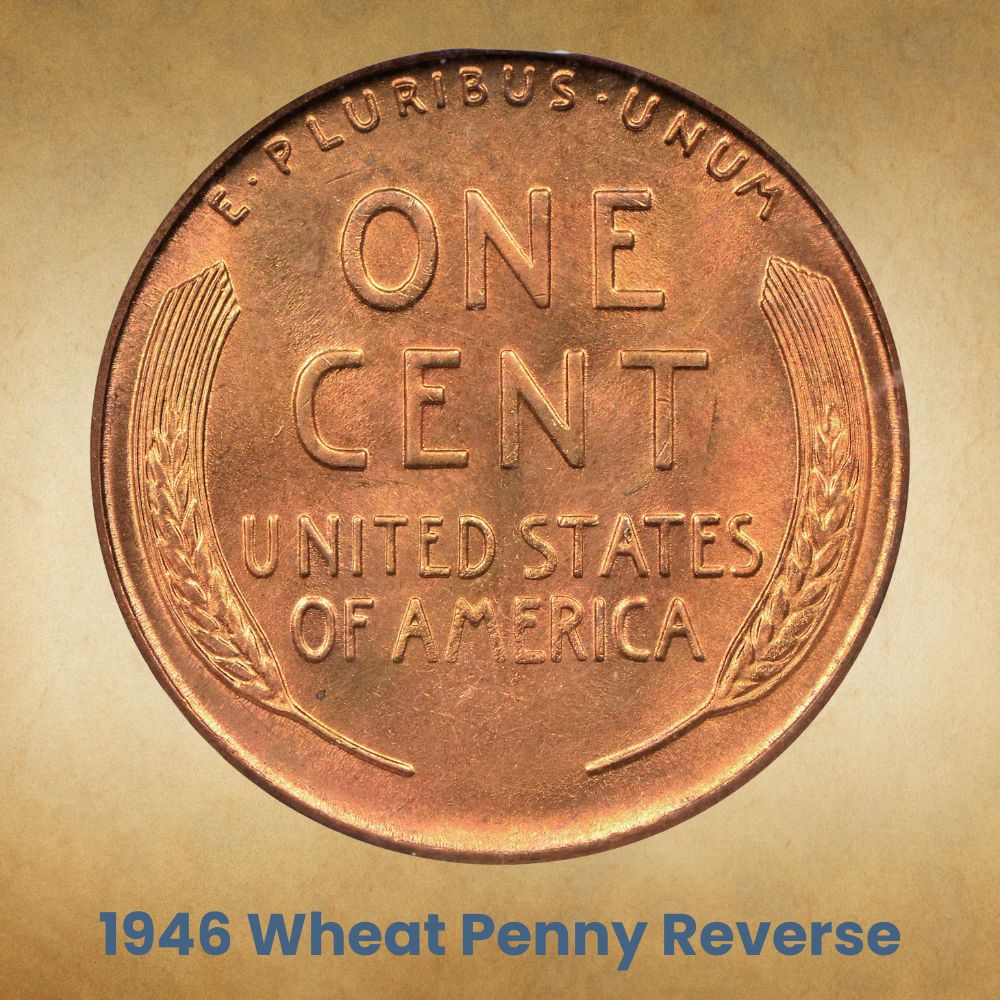
The 1946 wheat penny has the eponymous ears of wheat on its reverse. The simple design was also the work of Brenner, but it wasn’t his first attempt.
His original suggestion had been the branch of a tree, a design very similar to French coins of the same period. But the Mint Director, Frank A. Leach, told him it was unsuitable. Brenner went back to the drawing board, and came up with the classic image of two ears of durum wheat.
(Wheat sheaves were also suggested for the 2010 Lincoln penny. In this case, the design featured thirteen of them bound together in a ring. But the design was considered to be too close to German coins of the 1920s. The final version bore the image of what’s known as the “union shield” instead.)
Around the top of the coin, the words “United States of America” follow the curve of the edge. Beneath them is the motto “E pluribus unum”. It’s Latin for “From the many, one” and refers to the union of the states as a single country.
Curving along the lower edge of the reverse is the denomination, written as “One cent”.
Other Features of the 1946 Wheat Penny
Copper coins like the 1946 wheat penny are graded according to their color. When brand new, copper has a rich red tone. But over time that changes to brown, as the coins are handled and exposed to oxygen in the air.
All other things being equal, red coins are more desirable to collectors than their equivalents graded brown or red-brown. To be graded red, a coin must have a red tone over at least 95 per cent of the surface area of both sides.
Coins graded brown are brown over at least 95 per cent of their total surface area. And if the amount of red or brown is somewhere between those extremes, the coin will be graded red-brown.
The grading is coded with two letters in the coin description: RD for red, RB for red-brown, and BN for brown.
This YouTube video from CoinOpp looks at how to grade Lincoln pennies, including their color.
FAQs
Is a 1946 wheat penny rare?
Despite their age, most 1946 wheat pennies aren’t rare. Over 1.5 billion of them were struck, so even with the passage of time, they’re still easy to find.
There are some rare examples, however. The coins in the very best condition are, by definition, rare. And there are a number of interesting error coins too, some of which are valuable.
How much is a 1946 penny worth in 2022?
Most 1946 pennies are only worth their face value. But coins with an attractive red color and in excellent condition can be worth much more. While prices have declined as more fine quality coins have come to light, the best examples can still command many hundreds of dollars.

I found this 1946 penny the l is missing in Liberty and half the date seems to be missing what might it be worth?
I have a 1946 s Penny the l in Liberty is missing and half the date seems to be missing what it might be worth?
Is there supposed to be a vdb on the obverse side of 1946 penny? Mine doesn’t have it.?